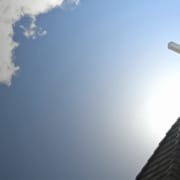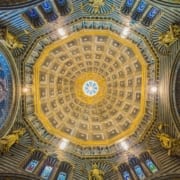Green Shoots of Hope
For I know the plans I have for you, declares the LORD, plans to prosper you and not to harm you, plans to give you hope and a future.
Jeremiah [29:11]
In the early part of the 20th century, many churches were built to house the growing population of Christian worshippers. At that time, because of the relative cost of building, churches were often large and statuesque buildings. They often served not only as a place of worship but also as a central place for the community. Many of these churches became artistic monuments and a great source of pride for local communities.
However, fast forward to today, thousands of churches are closing each year. This is a result of declining congregations and burdensome costs to maintain these older facilities. Some churches now spend the largest part of their budget maintaining these grand buildings, forcing them to cut back on community mission work and worship.
Attendance is Declining
At the same time, despite the growing population in the United States, worship attendance is declining, and population centers have shifted. In fact, 35 percent of churches today are experiencing declines in attendance. Much of this has affected the mainline denominations.
Non-denominational churches are also emerging and, in many cases, rent spaces at local schools or community centers, in effect lowering their operating costs and providing more services to the membership and local communities.
The effect of all these factors is the need to abandon these once-great pillars of our communities. Nostalgic memories are now not enough to keep them open.
Some churches are sold to create new housing, and others are just left abandoned. Millions of dollars’ worth of space is being sold or left vacant, while God’s work still needs to be done.
But there is a new trend starting to pop up like Easter flowers in the spring. New rays of hope for churches whose mighty edifices serve their communities. It is a trend to bring vibrancy back to these beacons of Christian light.
We recently moved to Asheville, North Carolina and came across one of these great churches from the past—the Bethesda United Methodist Church. Their membership had shrunk to a mere ten attendees each Sunday. Facing the inevitable decision to close, sell, or choose a new way to serve, they chose to continue serving, but in a new way.
Creating a Community Center
The congregation created a community center called Haw Creek Commons. Inside their building, they opened up meeting spaces for local businesses. They turned their kitchen facilities into a place for local chefs and bakers who needed space. They opened a retreat center that can sleep nine and started an Alcoholics Anonymous group and retrofitted space for local textile and woodworking artists, creating studios in an area where space is at a premium.
The congregation didn’t stop there. They changed their outside spaces as well. They constructed a community garden and food forest. The Haw Creek Bee Club needed space and were given a place for beehives. Next door was a school that had limited playground space. Once again, they responded to a community need and built a playground.
Instead of giving up, they changed.
They changed how they served their community. They didn’t stay riveted in the ways of the past. Ten people responded to save their Father’s House.
Today, the church is bustling with activity that creates and inspires. From a desperate situation, God answered their prayers by providing wisdom on how to make the bleak look bright.
A side benefit is that the church now has fifty attendees a week attending service—a welcome byproduct of change.
I can only imagine the discussions of the ten people that had to make this change. The hand-wringing and tough debates. Like the Israelites crossing the Red Sea many years before, this group had to walk between two walls of water into a brighter future. They trusted in God that the way forward, while unusual and dangerous, was the only course to take.
Change is Needed
We have all been in these situations, where the present conditions are no longer sustainable. Change is needed to step into an unknown future while seeking God’s will. It takes bravery and faith.
What Bethesda United Methodist Church has done is to show a way forward for the many churches in decline. This is no longer a mysterious step forward but a path created by a group of Christian pioneers. This isn’t the only place these new green shoots of life are arising for declining churches. It is happening at White Rock United Methodist church in Dallas, which has invited preschools to pop up in their building and they too are creating community gardens. And there are organizations like the United Methodist Development Foundation which is seeking to help these religious entrepreneurs change the course of what church life can look like.
Hope in the unseen is the very essence of faith. It takes blind faith in the power of God and a willingness to move forward.
Blessings, until next time,
Bruce L. Hartman
Dr. Bruce L. Hartman is the author of Jesus & Co. and Your Faith Has Made You Well.










